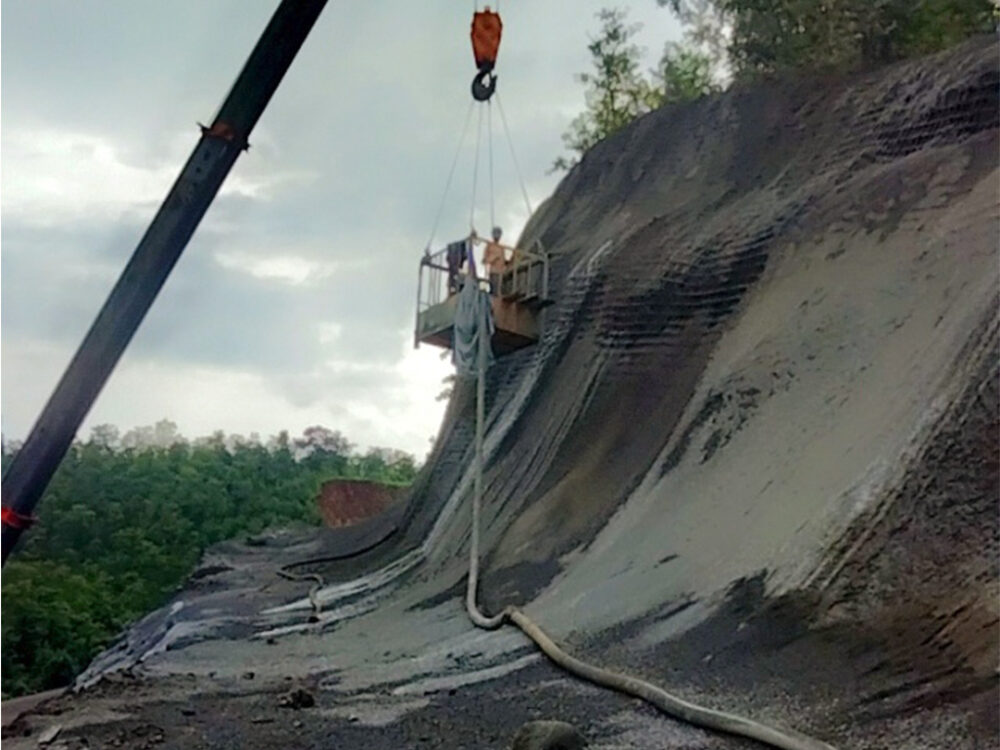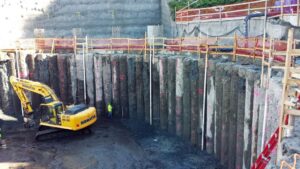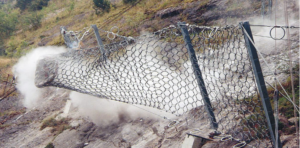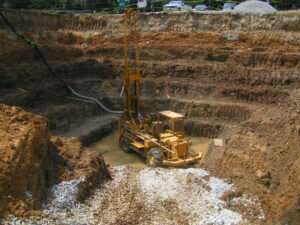Overview of Shotcrete
Shotcrete, sometimes referred to as sprayed concrete, is a multipurpose building material that is frequently used in geotechnical engineering to support, stabilize, and reinforce a variety of buildings. It provides a number of benefits over conventional concrete placement techniques, including the deposition of concrete onto surfaces via pneumatic projection.
Evolution and History
The mining sector was the first to produce shotcrete in the early 20th century as a means of providing ground stability. Shotcrete has become an essential component of contemporary geotechnical engineering methods due to improvements in equipment, materials, and application processes over time.
Shotcrete Types
Shotcrete comes in two main varieties: wet-mix and dry-mix. In order to apply wet-mix shotcrete, the concrete ingredients must first be combined with water. Next, the mixture is pumped through a hose to the application nozzle, where compressed air is added, and the mixture is sprayed onto the surface. In contrast, dry-mix shotcrete entails delivering the dry components of the concrete via a hose to the nozzle, where water is added right before spraying.
Geotechnical Engineering Applications
Shotcrete is frequently used for slope stabilization in areas that are vulnerable to landslides, erosion, or instability. The exposed surface can be filled up with shotcrete to increase stability and stop future degradation.
Tunneling & Underground Construction: Shotcrete is essential for these types of projects because it gives excavated surfaces instant support, lowers the chance of collapse, and protects worker safety.
Shotcrete is frequently used to build and reinforce retaining walls, particularly in difficult terrain where more conventional techniques might not be feasible. Because of its flexibility, it may be easily shaped into intricate and sturdy retaining walls.
Protection from Rockfall: Shotcrete is used to reinforce cliffs and rock faces in hilly and steep terrain areas to reduce the risk of rockfall and protect people and infrastructure.
Mine Support: Shotcrete is widely used in mining operations to reinforce subterranean structures such as shafts, galleries, and tunnels, as well as to stabilize the earth and support the roof.
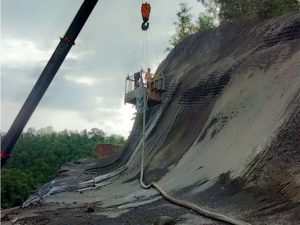
Benefits of Shotcrete
Quick Construction:
Shotcrete makes construction go more quickly, cutting down on downtime and project delays.
Flexibility:
Shotcrete may be used in a wide range of geotechnical applications due to its ability to adapt to different surfaces and shapes.
Shotcrete offers long-lasting protection against climatic variables and structural pressures because of its exceptional strength and endurance.
Cost-effectiveness:
Because shotcrete requires less labour and material than traditional construction methods, it can often result in lower construction costs.
Minimal Environmental Impact:
Shotcrete is an environmentally favourable material for geotechnical work because it generates less trash and disturbs the surrounding area less.
Obstacles and Things to Think About
Shotcrete has several benefits, but it also has certain drawbacks, such as:
Quality Assurance:
To ensure that shotcrete constructions have the appropriate strength and longevity, it is crucial to ensure appropriate mix design, application methods, and curing processes.
Surface Preparation:
Achieving the right adhesion and bond strength between the substrate and shotcrete requires careful surface preparation.
Equipment Maintenance:
To avoid downtime and guarantee continuous operation, shotcrete equipment needs routine maintenance.
Safety:
There are risks associated with working with shotcrete, including exposure to airborne particles and high-pressure equipment. Strict adherence to safety procedures is necessary to reduce these hazards and guarantee employee security.
Upcoming Developments and Trends
In geotechnical engineering, shotcrete is a field that is always changing due to research and development efforts aimed at enhancing building methods, tools, and materials. A few new developments and trends include the following:
Fiber-Reinforced Shotcrete:
Shotcrete’s tensile strength, crack resistance, and ductility are increased when fibers like steel, synthetic, or natural fibers are added, making it appropriate for demanding applications.
Automation and robotics:
Technological developments in these fields are making it possible to apply shotcrete more precisely and effectively, which lowers labour costs and boosts output.
Sustainable Materials:
As the construction industry looks to lessen its environmental impact, the use of recycled aggregates and alternative cementitious materials in shotcrete production is gaining favour.
Digitalization and Data Analytics:
Shotcrete mix designs are optimized, construction processes are tracked in real time, and the long-term performance of shotcrete structures is predicted through the use of digital tools and analytics.
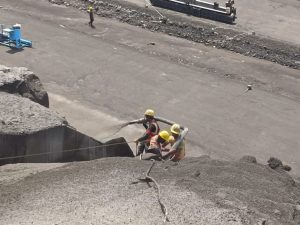
In summary
Worldwide, shotcrete is an essential component of geotechnical engineering projects due to its versatility and durability. It is a vital instrument for stabilizing slopes, strengthening structures, and guarding against geological risks due to its quick support, strength, and flexibility. Promising advances that will further improve shotcrete’s performance, sustainability, and efficiency in geotechnical applications are anticipated as technology develops.


